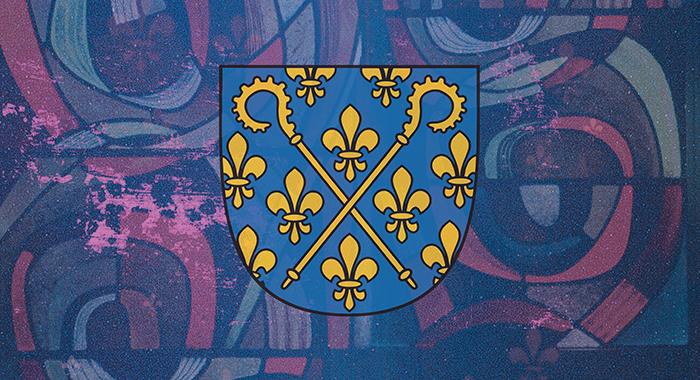A History Unfolds
Nine centuries of tradition stand behind the Norbertine mission of St. Norbert College. This storied march of time is given visible form in a new timeline that depicts the history of the Norbertine order and the history of one of its primary apostolates in the United States – the history of this, the only Norbertine college in the world.
“Seeing that the above-mentioned place, which is called Premonstratum, was very useful to the religious, I conceded it to Brother Norbert, his subordinates and his successors, that they should possess it freely, in perpetuity, and without objection.”
With these words in the year 1121, Bishop Bartholomew recounted a commissioning of sorts to a brand new religious order. And with these words, our twin timelines begin.
A double mural recently installed in the underground passage that connects Cofrin Hall to the Bemis Center recounts, on the one hand, the 900-year story of the Norbertine order to date and, on the other, the history of St. Norbert College – the only Norbertine institution of higher education in the world, and in itself a significant piece of that story. This is mission made visible – a goal, in fact, of the college policy of recent years to make sure that missional elements are a budgeted-for feature of each new building on campus.
A work of art in itself, the timeline reflects the studious and thoughtful research and creative input of the Rev. Andrew Ciferni ’64 and Rosemary Sands (who will shortly succeed Ciferni at the Center for Norbertine Studies).
As panel succeeds panel, the story builds and we understand anew the remarkable power of some 900 years of tradition as it meets our yearly intake of eager young minds.
Just as the order grew rapidly and flourished in its early years, so did the college, whose first two students have their own place in the “tunnel timeline.” In time, both institutions would encounter challenges that would threaten their very existence. The Norbertines would survive despite the impact of mendicant orders, the deadly march of the plague and, in later centuries, the French Revolution and the rise of Communism. The college would surmount the departure of its young men to World War II. Rebirth and renewal would follow and, over the ensuing decades, faith in their founding charisms would ensure the reach and influence of the twin institutions would only increase.
Our story begins with the words of a distinguished churchman, so let us, like our timeline, conclude with words of another – the Most Rev. Thomas Handgrätinger, abbot general of the Order of Premonstratensians. Hardinger's words, quoted on one of the final panels, not only hark back to one of the doctors of the church, but keep us in mind of a guiding principle that rings down the ages for both order and college communities:
“St. Augustine, whose Rule we follow, says we are to ‘live together in harmony, being of one mind and one heart on the way to God.’ In this sense we are to follow together to build communio – and, not for ourselves, but on the way, with the purpose, of God.”
March 20, 2018












